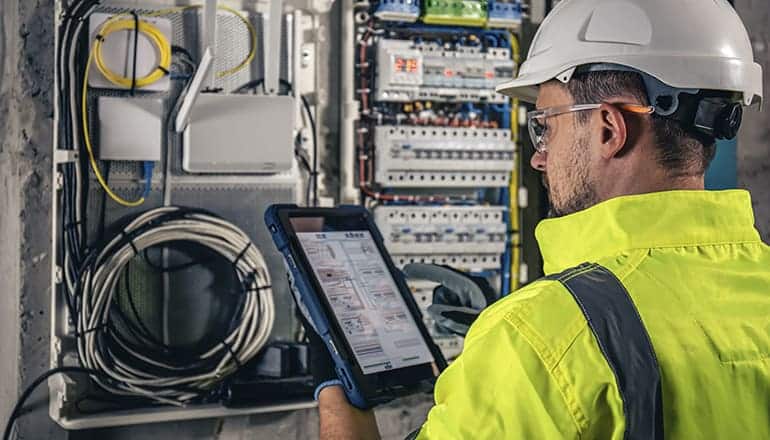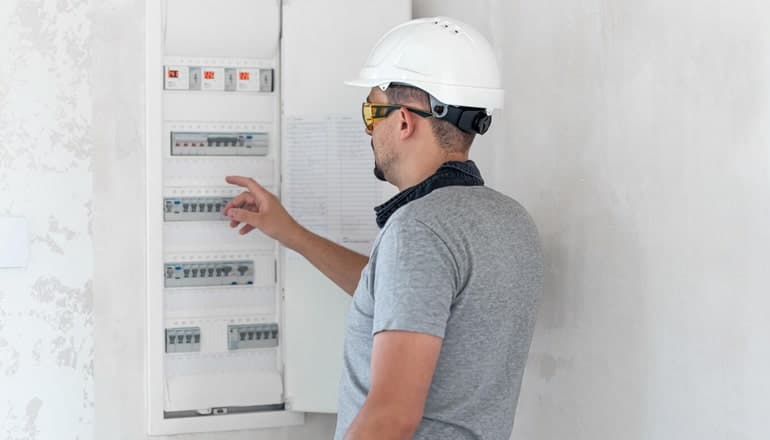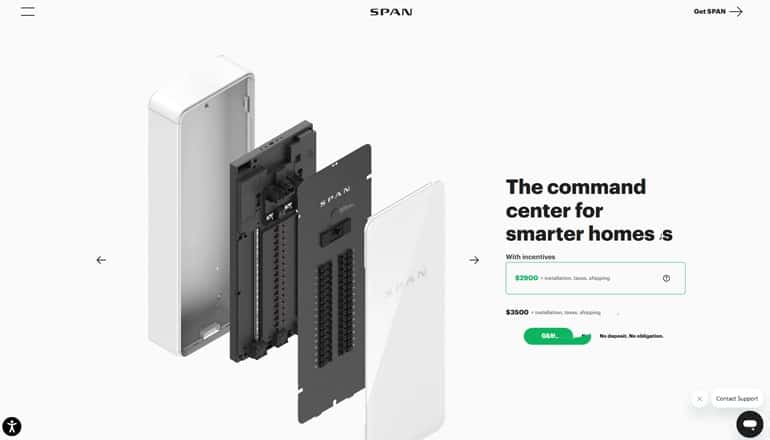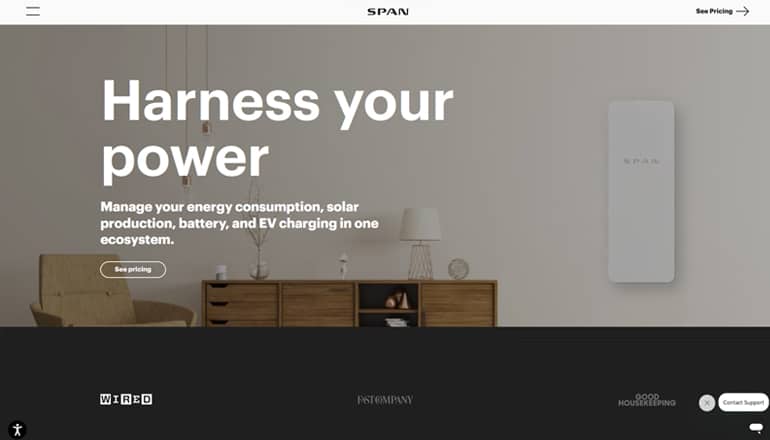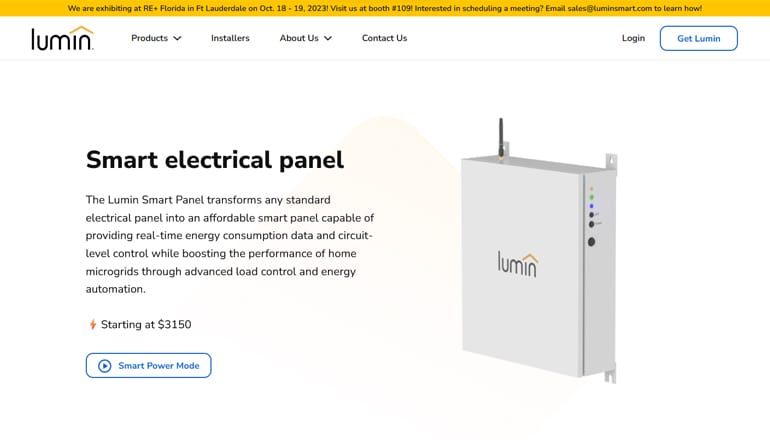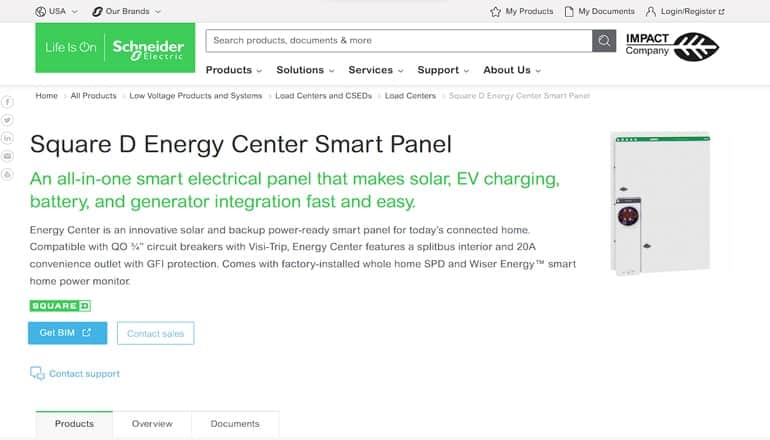
A Guide to Selecting the Right Smart Electrical Panel
Have you ever wished your home could communicate its energy usage and suggest ways to conserve it? With an intelligent electrical panel, this wish is now a reality. Imagine having a digital assistant that manages power consumption for every device in your house, from water heaters to EV chargers.
Now, picture the potential savings on your utility bills when you can monitor your energy usage in real time. If an unexpected power outage occurs, these intelligent panels ensure that essential circuits stay active thanks to backup battery storage systems.
If you’re intrigued by these possibilities, hold on tight because we’re about to dig into the details of smart electrical panels, including the top models, installation, savings, smart home features, and more.
What is a Smart Electrical Panel?
A smart electrical panel, or a load center, as some like to call it, is not just an upgraded version of the conventional breaker box in your home. It’s more like the brain behind your home’s electrical system.
Smart panels go beyond just managing energy efficiently. For example:
- If a particular circuit encounters an issue, such as an overload, only that circuit will trip. This specificity prevents unexpected blackouts and ensures continuity in power supply for the rest of your home.
- These sophisticated panels enable homeowners to monitor their energy consumption in real-time. Applications like the Leviton Load Center app or Schneider Electric Wiser Energy System app turn your mobile device into a window that reveals intricate details about your power usage.
- Envision a smart panel as a mainframe (the load center) housing several sub-processors (circuit breakers). Each sub-processor continually communicates its condition to the mainframe, leveraging advanced tech analogous to that in today’s EV chargers.
- Should any irregularity, such as an unusual current surge or a potential short circuit, manifest within a circuit, the smart panel is alerted immediately, enabling prompt intervention.
The implications of smart panels are transformative. Enhanced reliability, smarter usage, cost savings, enhanced safety, and more control – these smart panels revolutionize our interaction with and understanding of our home systems and gadgets.
They’re pretty new at the moment, but I’m sure it won’t be long before they’re in every new home.
Choosing Your Smart Electrical Panel
The smart panel is the central component of your electrical system, allowing you to track energy usage and improve efficiency. It not only lets you monitor real-time power consumption but also optimizes energy use for better efficiency.
The first step towards selecting an ideal smart electric panel involves assessing your household’s energy needs:
- Do you have gas appliances or induction stoves?
- Is there a heat pump in place or traditional water heaters?
- Do you have solar panels, a home backup battery, or an electric vehicle?
Understanding how much electricity each device consumes will help you decide on a panel that can handle the load efficiently.
In North America, older homes typically need service upgrades from 100-amp service to manage more robust systems like EV chargers and backup generators. A professional site visit could give insights into whether such an upgrade is needed. Remember, choosing an appropriately sized smart electric panel ensures essential circuits stay active during power outages without overloading the system.
Your choice should also consider compatibility with existing battery storage systems and renewable energy sources, if any. For instance, Schneider Electric panels are known for their seamless integration with various storage solutions. The cost of a standard smart panel typically falls between two and five thousand dollars, with potential upgrades costing an additional one to three thousand.
To illustrate this point further, imagine having different types of batteries in one remote control – it just wouldn’t work. Similarly, mismatched components within your home’s electrical system can cause inefficiencies.
Smart panels like Leviton Load Center offer real-time monitoring via a mobile app, letting you manage energy usage on the go. You can even turn breakers off remotely when needed. Now, that’s smarter energy management for modern homes.
When considering such an investment, make sure to factor in potential future changes as well. For example, are there plans to add more electric panels or upgrade your home’s electrical service? These could affect which smart panel best fits your needs.
Just keep in mind the initial costs might seem steep, but you’ll likely save more in the long run with optimized power usage and longer battery life. Let’s dig into the installation costs and setup.
Installation and Setup of Smart Electrical Panels
The installation process for a smart electrical panel is an important step in optimizing your home’s energy usage. It’s tempting to try installing a smart panel yourself, but it’s not recommended.
Smart panels are not DIY projects – they need professional hands. This isn’t just about fixing wires; it involves understanding complex electrical systems, ensuring safety standards, and possibly doing a service upgrade, which can cost from $1,300 to $3,000, according to Rewiring America – Circuit Breakers & the Grid.
Why rely on professionals? Their specialized knowledge ensures they can select the best circuit breakers for your load center or service panel. By trusting experts, you minimize the risk of costly errors and potential safety hazards down the line.
Your newly installed smart electrical panel is like having a brand-new smartphone packed full of features waiting for you. You’ll want someone who knows their way around these digital gadgets so everything runs smoothly right off the bat.
- The first thing they’ll do is connect your smart panel to all essential circuits within your home’s existing wiring system.
- This enables real-time monitoring and control over power consumption across various appliances throughout the house.
- Last but certainly not least, the setup includes integrating mobile apps onto devices such as smartphones or tablets – now that’s taking charge.
If turning switches on and off at your breaker box makes you feel like a caveman, smart panels are the fire of modern home automation. With them, not only can you manage energy usage efficiently, but you also get detailed insights into your power consumption.
Just like any other tech upgrade, putting a smart electrical panel in your house is an investment. It’s one that’ll definitely pay off big time as you go along.
Managing Energy Usage with Smart Electrical Panels
If you’re like me, constantly seeking ways to optimize energy consumption and trim the electric bill, a smart electrical panel might just be your new best friend. It’s not only about cost savings; it’s also about being kinder to our planet by reducing fossil fuel usage.
A smart electrical panel gives you real-time insights into your home’s energy use right from your mobile device. No more guessing games or nasty surprises when the monthly bill arrives. With this technology, every circuit breaker becomes a window into power consumption in different areas of your house.
The beauty of having this level of detail is that it allows for proactive load management. For example, if an induction stove or heat pump is drawing too much power during peak hours, adjustments can be made on the go to prevent unnecessary costs and strain on the grid.
This optimization goes hand-in-hand with increased efficiency at all times. One noteworthy stat – SPAN Panel users have reported improved battery backup during power outages due to enhanced load control management enabled by these panels.
The SPAN Panel, a solution I’ve personally reviewed (and love), offers features such as intelligent alerts about unusual activity and predictions about future usage based on past patterns. More on this in a bit.
All these help homeowners make smarter decisions regarding their electricity use while adding another layer of safety through early fault detection.
Comparison of Top Smart Electrical Panels
The landscape of smart electrical panels is rapidly evolving, with a variety of options available to consumers. It’s like stepping into an electronics store – the choices are vast, and each product has its unique strengths.
The cost of these innovative panels varies significantly from brand to brand. On the one hand, we have the SPAN Panel, which costs around $2,900 plus installation fees. Other brands, such as Schneider Electric or Leviton Load Center, swing between $2,000 to $5,000 in price.
This range reflects different features and capabilities across various models. However, remember that while choosing a smart panel purely based on pricing might be tempting – it’s not always about getting the cheapest deal. The real value lies in how effectively these systems manage energy usage at your home or business.
1. The SPAN Panel
Let’s take a close look at the SPAN Panel, an innovative smart electrical panel that is transforming home energy management. You may have heard of it already, as it comes up first on most lists and prominently featured on Wired magazine.
So, what makes the SPAN Panel special? First off, it lets you control individual appliances or whole rooms. This means you can get a clearer picture of how much energy you’re using in different parts of your house. And to make things even handier, there’s an accompanying mobile app that keeps you updated on your energy use, and yes, you can make adjustments straight from your phone.
One of the great things about the SPAN Panel is its compatibility. If you’ve got systems like the Tesla Powerwall or Enphase IQ Battery, the SPAN Panel will integrate with them seamlessly. It’s all about making your home energy setup more cohesive and efficient.
In terms of costs, some users have reported savings of up to $300 a year thanks to the SPAN Panel. Considering its price point of around $2,900 (excluding installation costs), it seems like a worthwhile investment when you factor in potential savings and the greater control you’ll have over your energy consumption.
Now, if safety is a concern for you, let’s clear that up. The installation of the SPAN Panel is up to North American safety standards. It’s all about replacing the older breaker boxes with this new tech without having to redo all your wiring. It’s a straightforward process, and the experts handling the installation are well-versed in making the transition smooth and safe.
In a nutshell, the SPAN Panel offers homeowners a chance to step up their energy management game. With its user-friendly features and safety assurances, it’s an upgrade that’s well worth considering.
2. The Lumin Smart Panel
Lumin has been making waves, especially with their recent showcase of the Lumin Edge.
So, what’s the buzz about with the Lumin Smart Panel?
- Versatility: Lumin allows you to “swap” energy loads depending on where you are in the house. So, if you’re in the living room, it can prioritize power there.
- Savings & Efficiency: Users have been able to reduce their daily energy usage by up to 34%. That’s not just good for the planet; it’s great for your wallet.
- Battery Backup: With Lumin, you can get nearly whole-home backup power without needing a monstrous battery storage system. It optimizes what’s powered on during an outage to make sure your batteries last as long as possible.
- Insightful App: The Lumin app isn’t just a remote control; it offers grid outage notifications and gives you a clear view of where your energy is coming from. Plus, for those environmentally conscious folks, you can even get insights on the CO2 impact of your energy use.
- Safety and Savings: The Lumin system extends battery life on solar setups, giving homeowners better backup during outages and possibly extending the lifespan of expensive battery systems.
What’s different about the Lumin Edge is it rewires ordinary “dumb” panels to be “smart.” So, assuming you have a modern panel, you can keep your existing panel and stick a brain into it. Pretty cool, actually!
3. The Schneider Electric Square D Energy Center
As homeowners become more environmentally conscious and the demand for sustainable and intelligent energy solutions grows, Schneider Electric is stepping up with its innovative offering: The Square D™ Energy Center.
The Square D Energy Center isn’t just another electrical panel. It’s an all-in-one solution that combines the best of transfer switches, inverters, utility metering, and energy monitoring into a unified system:
- Solar and EV Integration: A true representation of a forward-thinking approach. It’s solar and electric vehicle-ready right from the outset.
- Space-Saving Design: With its sleek, modern design, it ensures efficient use of wall space without compromising on looks.
- User-Centric Design for EV Charging: An inbuilt 20 A outlet for EV charging with GFI protection is a nod to the rising trend of electric vehicles.
- Maintenance Made Simple: Removing door panels or referencing circuit directories? Schneider has simplified these with intuitive design choices.
- Empowerment Through Monitoring: The integration of the Wiser Energy home power monitor and the special edition of the Sense app brings energy insights right to the homeowner’s fingertips. With machine learning capabilities, it understands and breaks down energy consumption patterns in real time.
- Safety is Paramount: It features comprehensive surge protection, ensuring all home appliances are safeguarded from unexpected electrical surges.
- Solar Independence: Even if homeowners are connected to the grid, the Energy Center ensures that in times of outages, solar energy keeps the home powered.
- Adaptable Backup Solutions: From batteries to solar panels and generators, the system’s seamless integration capabilities ensure there’s always a backup.
The technical details: It can seamlessly handle a 120 A back feed from solar or battery setups, and it’s rated for a robust 200 A in a single-phase system. Not just that, it’s designed to combat electrical surges and short circuits up to 22 kA and boasts rain-proof, semi-flush mounting. It’s also pretty spacious, accommodating up to 70 circuits and incorporating a dedicated EUSERC-compliant meter socket.
The Square D Energy Center proves, once again, Schneider Electric’s commitment to pioneering groundbreaking solutions for tomorrow.
Conclusion
Getting to grips with a smart electrical panel is not just about tech. It’s about taking control of your home energy management.
Recognizing the benefits – from real-time monitoring to load management, you’re now prepared for a more sustainable lifestyle. You understand that choosing the right smart panel means assessing your energy needs and compatibility with storage systems.
Weighing up options like SPAN Panel, installation costs, or service upgrades, you’re equipped to make an informed decision. And when power outages hit? With battery backup systems and essential circuits intact, you’ll keep the lights on!
In short, upgrading isn’t just wise; it’s necessary for future-proof living.
Sure, it’s cool to add another thing to your smart home and get that extra control, but you can also feel good about making your home safer, saving money on your electrical bill, reducing your carbon footprint, and potentially improving the lifespan of the devices inside your home.


